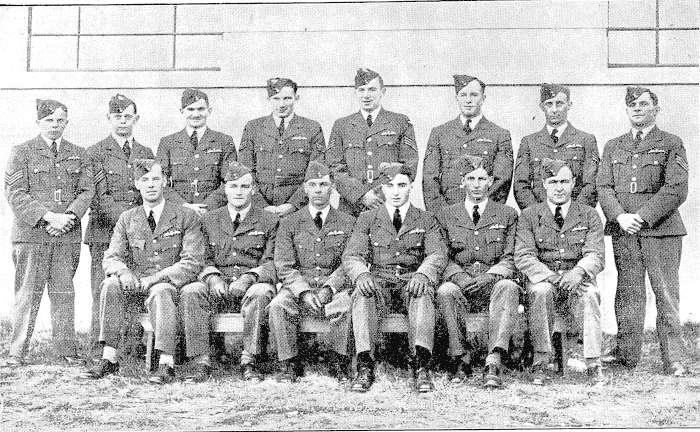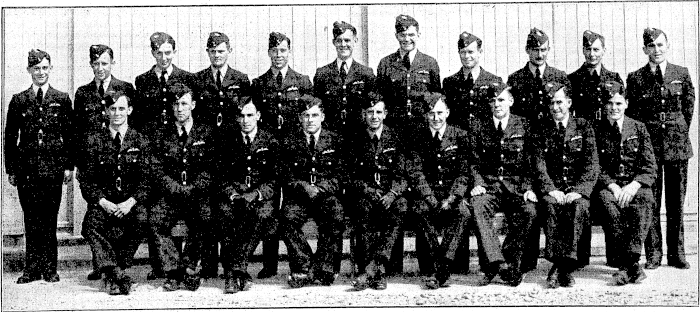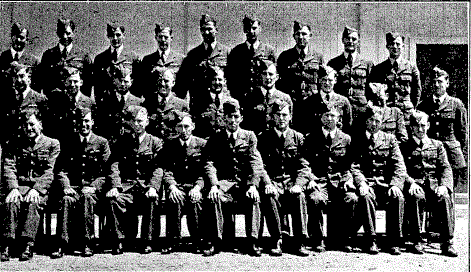|
|
Post by tbf25o4 on Jun 25, 2020 11:36:53 GMT 12
David, the F/S hat was also known by a very crude title which refers to a certain part of the female anatomy
|
|
|
|
Post by davidd on Jun 25, 2020 12:22:53 GMT 12
Paul,
Thank you for that, although I had been informed of that one many years ago, just too polite for my own good! Another term from the same informant (not you Paul!) which I had not heard of before was reference to women, that is younger, possibly available women, as "crow", a term I which I found rather odd and unattractive, and I certainly had never heard of this term from contemporaneous civilians. However other, older Board members may know more about this, but then again, a may not wish to know!
David D
|
|
|
|
Post by Dave Homewood on Jun 25, 2020 13:06:48 GMT 12
Captain H.L. Upton, DSO, RD, RNR, was appointed the captain of the Rangitane around March 1938, replacing Captain A.W. McKellar RD, RNR (ret.).
|
|
|
|
Post by fwx on Jun 30, 2020 21:12:27 GMT 12
Thanks David, and Dave, That's good information to have.
The old NZBCA and 75 Sqdn Assn newsletters have been a source of several fascinating items.
One is an entry mentioning a photo album that belonged to E.P. "Ted" Williams, one of the Wireless Operators listed above, a founding member of the New Zealand Squadron and 75 (NZ) Squadron who went on to fly with Aubrey Breckon on his famous Narvik reconnaissance and eventually become 75's Signals Leader.
His widow was offering copies of his photos to the 75 Sqdn Assn and someone travelled down to Wellington to copy the album for the Assn's archives, at that time held in Wanganui.
Ted's photos probably included some from those very early days.
I wonder whatever happened to those archives??
|
|
|
|
Post by skyhawkdon on Jul 1, 2020 7:33:31 GMT 12
Glen Turner has the Association archives...
|
|
|
|
Post by Dave Homewood on Aug 27, 2020 11:24:48 GMT 12
 PASSING-OUT INSPECTION AT WIGRAM.— Six acting-pilot officers and eight sergeant pilots were passed out at a ceremony at the Royal New Zealand Air Force Station at Wigram yesterday. FROM LEFT: BACK ROW: Sergeant Pilots G.C.R. Pannell, J.B. Courtiss, G.S. Taylor, E.E. Croker, R.L. Baker, H.R. Mitchell, C.F. Scott and K. Dawick. FRONT ROW: Acting-Pilot Officers V. D. Gain, J. H. Deans, A. B. Baird, A. F. H. Tye, B.H. Thompson, and D. M. Whitney. PRESS, 29 JUNE 1940 |
|
|
|
Post by Dave Homewood on Aug 27, 2020 23:05:21 GMT 12
 PRESS, 27 JULY 1940 |
|
|
|
Post by Dave Homewood on Aug 29, 2020 13:30:43 GMT 12
 PASSING-OUT INSPECTION AT WIGRAM.— A passing-out ceremony of pilots who have completed their training at Wigram was held yesterday. BACK ROW, FROM LEFT: Sergeant Pilots H. A. Poole, R. E. Hanlon, R. K. Walker, M. Foley, W. H. Swain, K. Manson, and J. R. Fry. FRONT ROW: Sergeant Pilot I. W. Terry, Pilot Officers J. W. Thomson, E. E. Stewart, C. W. Scott, F. H. Bethwaite, and M. B. Stevens. PRESS, 24 AUGUST 1940 |
|
|
|
Post by Dave Homewood on Aug 29, 2020 23:05:00 GMT 12
Some famous names in this one  PILOTS COMPLETE THEIR TRAINING:—A further course of pilots was passed out at the Royal New Zealand Air Force Station at Wigram on Saturday. BACK ROW, FROM LEFT: E. L. Joyce; A. C: Kelly, T.G. Webb: G.W. Alington, D. W. Gough, D. M. Walker, S. 0. J. Murphy, H. G. Doherty, H. S. R. Cameron, H.G. Saunders, and A. C. Mee. FRONT ROW: J. T. Wallace, E. C. Ball, G.H. Grimsdale, D. S. Hamilton, J. H. Penney, R.K. Bird, D. J. Scott, R. J. Bullen, and K. S. Jenner. PRESS, VOLUME LXXVI, 23 SEPTEMBER 1940 |
|
|
|
Post by davidd on Aug 30, 2020 12:27:13 GMT 12
Dave,
These four photographs comprise the successful members of Nos. 14 to 17 Courses of No. 1 Flying Training School at Wigram. No. 14 Course members all had "39xxxx" numbers, rest all had "40xxx or 40xxxx" numbers. Approximate dates of commencement of these course at Wigram were: 12/3/40, 9/4/40, 6/5/40, 1/6/40, graduation dates were 28/6/40, 26/7/40, 23/8/40, 21/9/40 respectively. As you can see, these dates match up very closely with the dates of publication of these photographs. No. 15 Course seems rather small, but nine of these men were shipped off to the RAF, and 4 (J G Dunstan, H A Eaton, D J V Henry, H L Piper) were retained in NZ for instructor duties. Two other course members (A J Hull, H J Von Tunzelmann, not shown here) were killed in an Oxford crash on 22/7/40. Later wartime courses were considerably larger than these early ones. Incidentally No. 2 FTS at Blenheim (Woodbourne) was also cranking out graduates during this same period (their equivalent course numbers were 3 - 6, with commencement and graduation dates pretty well identical to Wigram). You can see that from Couse No. 17 onwards, about a 50% increase in pupil numbers per course.
David D
|
|
|
|
Post by Dave Homewood on Aug 30, 2020 14:25:13 GMT 12
and 4 (J G Dunstan, H A Eaton, D J V Henry, H L Piper) were retained in NZ for instructor duties. Hugh Eaton went on to fly P-40's with No. 14 Squadron RNZAF at Masterton and then back to instructing at bother fighter OTU's. Harold Piper flew operationally with General Reconnaissance squadrons. |
|
|
|
Post by davidd on Aug 31, 2020 8:54:25 GMT 12
Dave, the H L Piper mentioned above was NZ40241 Harvie Llewellyn, RNZAF, not to be confused with the more famous Harold Lord (from Banks Peninsular), who learned to fly at Sockburn late in WW1, flew with NZPAF in mid-1920s, the RAF in 1920s/30s, participated in the famous flight out to NZ in 1930 with Cyrus Kay in the Desoutter, and finally joined Short Brothers as a test pilot (and later chief test pilot) in mid-1930s (mostly on flying boats). They may have been related, and having the same initials has rather predictably created all sorts of problems for historians over the years!
David D
|
|
|
|
Post by Dave Homewood on Aug 31, 2020 8:59:33 GMT 12
One reason I always avoid the "just initials" when I write anything. It is one of the most frustrating customs of the past.
Harold Piper also flew one of the two aircraft in the amazing Short Mayo combo.
|
|
|
|
Post by davidd on Aug 31, 2020 9:10:25 GMT 12
Dave, it was the much older Harold L Piper who flew with Short Brothers as the test pilot.
The younger Harvie was born 23/7/15, commissioned in RNZAF on completion of pilot training at Wigram 27/7/40, to Ohakea (as staff pilot?) 5/8/40. He subsequently completed a flying instructor's course @ Hobsonville on 18/11/40, and thereafter served as a flying instructor at Harewood (3 EFTS) till 10/12/41, then Whenuapai (4 EFTS) till 8/2/42 when this EFTS was closed down, reverting to Harewood (still instructing) before commencing a new career as a GR pilot from 24/10/42. On this date, he commenced a course @ School of GR, New Plymouth, and on completion he was flying Hudson aircraft from Nelson (2 GR) from 7/2/43, then to Nausori, Fiji (4 GR) from 5/5/43, to 9 Sqdn (Espiritu Santo) from 5/7/43, 3 Sqdn at Guadalcanal 12/7 - 16/10/43, serving "on the front line". At this point he and his crew returned to Santo, and by 16/11/43 he was back in NZ, with a newly reformed No. 9 Sqdn at Whenuapai, still on Hudsons. From 5/12/43 he was on more peaceful duties with 40 Sqdn also at Whenuapai, presume flying Lodestars and Hudson transports till September 1944. At this point he was posted to the Utility Flight at Guadalcanal, flying Hudsons again, still on transport duties, till returning to NZ for leave in about January 1945, but returned to this unit in mid-February on appointment as Officer Commanding Utility Flight. He was also at this time appointed as pilot, AOC's aircraft, replacing F/L H C (Harvey) O'Loughlin, in this post.
David D
|
|
|
|
Post by Dave Homewood on Aug 31, 2020 10:14:12 GMT 12
Yep, sorry I got myself confused after reading your post about not getting them confused.... fixed it now.
|
|
|
|
Post by Dave Homewood on Aug 31, 2020 16:45:26 GMT 12
More who would become famous names!  PILOTS PASS OUT ON COMPLETION OF THEIR TRAINING AT WIGRAM.— Another group of Air Force trainees who have gained their wings and who passed out at Wigram aerodrome on Saturday. Front Row, from left: R. J. Newton, F. W. J. Oakden, J. T. A Harris. E. J. Henry, J. McL. Pearson, H. R. Blake, D. C. Stewart, R. H. Balfour. Centre row: C. T. Guild, L. P. Griffith, R. W. McSkimming, R. H. Patterson, B. Appleby, A. H. R. Hawkins, F. N. R. Thomas, S. D. L. Hood, D. T. Herrick. Back row: W. H. Russell, R. G. Eccles, D. F. Streeter, V. D. James, W. Christiansen, M. Vanderpump. PRESS, VOLUME LXXVI, ISSUE 23157, 22 OCTOBER 1940 |
|
|
|
Post by davidd on Sept 1, 2020 11:26:40 GMT 12
The above image shows, of course, members of No. 18 Course, 1 FTS, Wigram (commenced course 29/6/40, graduated 19/10/40). Originally there were three other course members (W K Anderson, R R Barber, A A McLean), probably all terminated from flying training. Two of the graduates (Eccles, Patterson) had originally been members of previous courses. I P Griffith should read L (for Lyndon) P Griffith; full initials of Vanderpump are of course M T (for Mortimer Tuke). Otherwise all initials and spellings seem perfect. Most of these men were numbered between NZ40954 and 40994, although Eccles was 40759, Blake was 401164, McSkimming was NZ1314, Oakden was 401028, Patterson was NZ391845, and Streeter was 401033.
David D
|
|
|
|
Post by Dave Homewood on Sept 1, 2020 21:51:12 GMT 12
PASSING-OUT CEREMONY AT WIGRAM. Pilots who have completed their training at Wigram were passed out at a special ceremony on Saturday. FROM LEFT, back row; A. H. Manz, P. S. Green, J. H. M. Carswell, D. E. Fair, E. C. Cox, R. Brooke-Taylor, M. K. McHugh, K. J. Newman, C. D. A. Highet. Middle row: F. S. Hobden, C. H. Robson, D. C. Joyce, M. W. Coxon, R. J. Smith, K. R. Clarke, C. McD. Didsbury, L. A. McLellan-Symonds, D. S. Gibb. Front row: G. W. Paul, E. Liverton, L. R. Reynolds, J. N. Lloyd, P. J. J. McMullan, R. N. Allen, B. W. Feeley, D. S. McGregor, and A. D. Carlaw.  |
|
|
|
Post by Dave Homewood on Sept 1, 2020 21:59:36 GMT 12
I P Griffith should read L (for Lyndon) P Griffith; full initials of Vanderpump are of course M T (for Mortimer Tuke). I have corrected Griffith's initial, but left Mort Vanderpump as the newspaper caption has it. Why did some pilots early in the war receive these four digit numbers, while most for the more common six digit with the year prefix? Did it come from some previous service? |
|
|
|
Post by errolmartyn on Sept 1, 2020 23:55:49 GMT 12
Why did some pilots early in the war receive these four digit numbers, while most for the more common six digit with the year prefix? Did it come from some previous service? It's all explained on pages 19-20 under 'Service Number' of 'Explanatory Notes' in my Vol 3 of For your Tomorrow, which no aviation enthusiast or historian should be without! Cheers, Errol |
|



